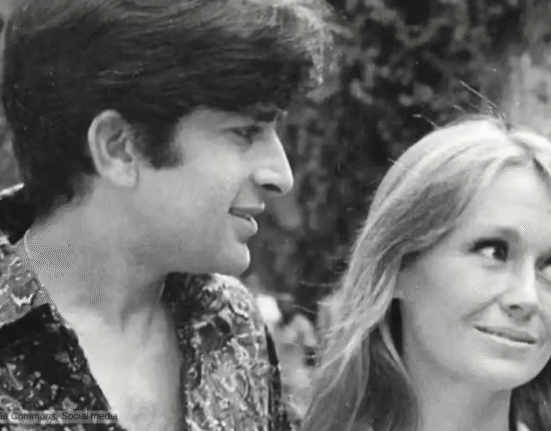One of the most beautiful faces of Indian cinema, a star like no other, the aura of Suchitra Sen was so overwhelming that sometimes her acting prowess became secondary. Who could have taken away their eyes from her face to notice anything else other than being mesmerised?
She was always the way she finally emerged on screen. She was haughty, snobbish, moody, peevish, absent minded, self-absorbed, self-confident, wilful, assertive and totally in command of herself. And she was beautiful.
Suchitra Sen’s biographer, Phularenu Kanjilal
Early Life
Suchitra Sen (Rama), born on April 6, 1931, in Bhanga Bari village of Belkuchi Upazila, now in Sirajganj, Bangladesh, was an enigmatic and iconic figure in Indian cinema, particularly celebrated for her work in Bengali and Hindi films. With her ethereal beauty and compelling performances, she carved a niche for herself in the hearts of audiences.
Suchitra Sen, married Dibanath Sen, son of industrialist Adinath Sen, in 1947 at the age of 15, with whom she had her only daughter, Moon Moon Sen.
Cinamatic Journey

Suchitra Sen’s cinematic journey began in the early 1950s, and she swiftly rose to prominence with her remarkable acting prowess despite the fact that her debut film “Shesh Kothaay” was never released. The following year comes Sharey Chuattor, a film by Nirmal Dey, where she was cast opposite Uttam Kumar, launching Uttam-Suchitra as a leading pair. For the next 20 years, the pair ruled the Bengali box office and the hearts of not just Bengalis but of people all over the world. She was the woman of everyone’s dreams. Her smile, her gaze… She was not just beautiful, she was very attractive too.
Some of her Bengali films are Shaare Chuattar (1953), Saat Number Kayedi (1953), Sabar Uparey (1955), Harano Sur (1957), Saat Pake Bandha (1963), and Pranay Pasha (1978), her last release.
Suchitra Sen In Hindi Films
Her collaboration with Bengali film director Bimal Roy in Devdas (1955) catapulted her to stardom. The film showcased her ability to portray complex characters with depth and sensitivity. Her magnetic presence and captivating performances earned her accolades and a devoted fan base.
One of her best-known performances was in “Deep Jwele Jaai (1959),” where she played a character named Radha Mitra, a hospital nurse employed by a progressive psychiatrist who herself goes insane when she falls in love with a patient. Asit Sen remade the film in Hindi as “Khamoshi (1969),” with Waheeda Rehman in Suchitra Sen’s role. Suchitra Sen’s other landmark film with Asit Sen was Uttar Falguni (1963), which was remade in Hindi as Mamta (1966).


Her foray into Hindi cinema saw her sharing the screen with Dilip Kumar in “Devdas” (1955). She starred opposite Dev Anand in “Bambai Ka Babu” and Sarhad (1960), and Ashok Kumar and Dharmendra. In “Mamta” (1966).
She also did Hrishikesh Mukherjee’s experimental film Musafir (1957), an expoerimental film. She also acted in Bharat Bhushan’s Champakali (1957). The film has Hemant Kumar’s haunting “Chhup Gaya Koi Re Door Se Pukar Ke.” Her final Hindi film was Aandhi (1975), with Sanjeev Kumar and directed by Gulzar. The film, allegedly took inspiration from the life of then-Prime Minister Indira Gandhi and her relationship with her husband. In reality, the film only borrowed the looks of the politicians “Tarkeshwari Sinha” and “Indira Gandhi.”
Legacy
Suchitra Sen’s contribution to Indian cinema was not just about her acting talent but also about challenging societal norms. Known for her strong-willed persona, she withdrew from public life for almost 3 decades after her retirement, maintaining a mysterious aura until her passing on January 17, 2014.
Rather than wither and fade in the full public glare, Suchitra decided on a dramatic exit, closing the door on the world that worshipped her. For over three decades, she made sure she escaped the public eye. Privacy became her enduring obsession. And it grew with every passing year. Even when she was hospitalised, she was paranoid about being seen and photographed.
Suchitra Sen’s legacy endures through not only her performances and beauty but also her choices. She lived as a star and a darling of the masses but maintained her mysterious persona so much that people call her an “enigma.”. She left the world in a similar way—the only way she liked it—by being mysterious and leaving viewers wanting more.
Suchitra Sen on IMDB









